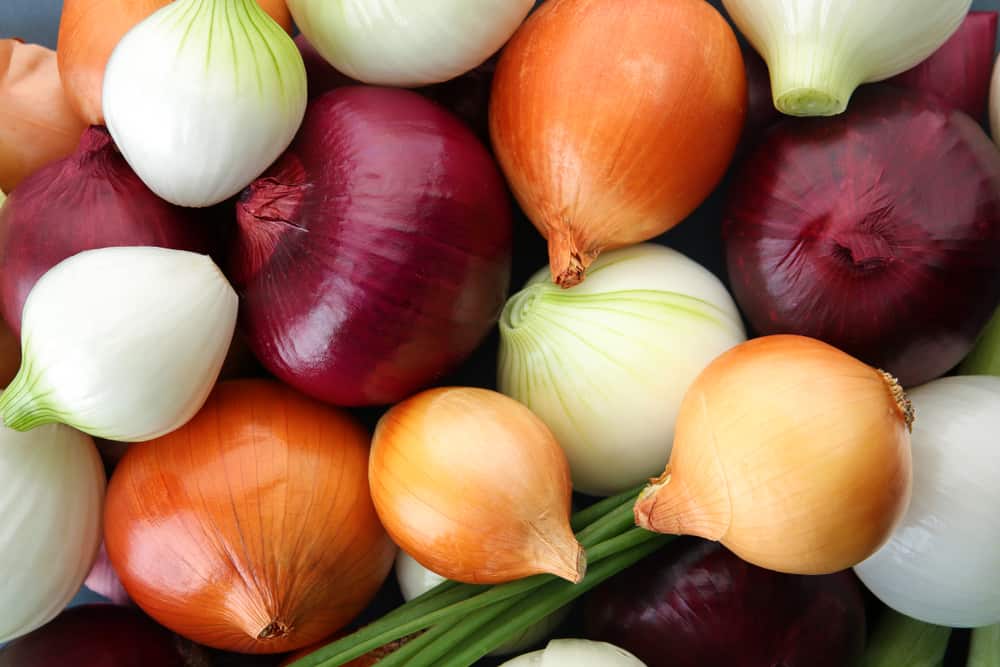
Did you know that onions come in a huge variety, from red, white, and yellow onions to pickling, Bermuda, and torpedo onions? They are one of the most indispensable vegetables because, let’s face it, almost every pie, soup, and casserole call for an onion.
It is one of those rare foods with a combination of different flavors ranging from sweet and mild to super complex and pungent.
It is also one of the most versatile of all foods, given how you can use various techniques for it, like grilling, braising, roasting, sautéing, pickling, caramelizing, and even serving raw.
History of Onions
Many believe that onions originated from Central Asia, while many others suggest they are from West Pakistan and Iran.
It is said that the consumption of onions began long before farming was even invented, and this humble vegetable went on to become a staple in the prehistoric diet.
Interestingly, onions were also used as an object of worship in Egypt and symbolized ‘eternity,’ which is why Egyptians buried pharaohs with large amounts of onions. The underlying theory behind this is that because of the unique structure of onions, that is, circle-within-circle, it was highly characteristic of eternal life.
Here are some of the most famous and common types of onions used all around the world.
1. Yellow Onions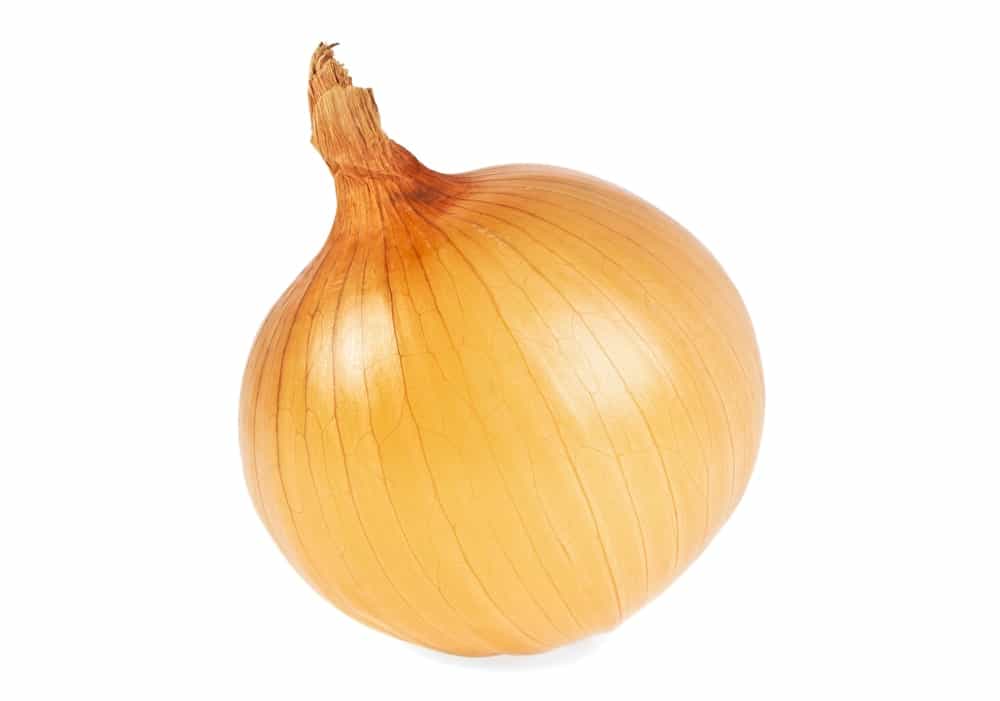
Also called brown onions due to their brownish-yellow papery peel, yellow onions are a chef’s “safest bet” when a recipe doesn’t specify what type of onion to use. They contain a high sulfur content, giving them a strong, complex, and pungent taste.
Yellow onions are usually available throughout the year, majorly between the spring and fall seasons, after which they are stored for the rest of the year. 90 percent of yellow onions are grown in the United States, and it is also one of the most commonly grown types of onion in Northern Europe.
Yellow onions’ incredibly rich and potent taste makes them perfect for foods like French onion soup, stews, caramelized onions, and many more.
2. Sweet Onions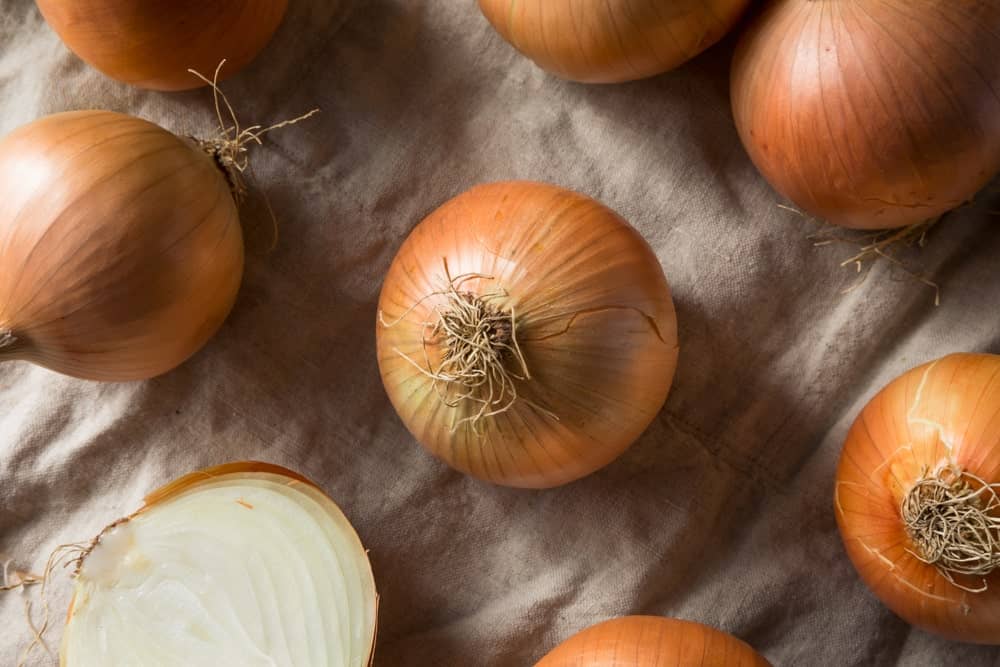
True to their name, sweet onions have a sweet kick that makes them ideal for caramelizing. They have a crispy texture with a fairly mild flavor that tastes excellent raw in salads and relishes. This sweet-mild flavor comes from its low sulfur content and high water content.
Sweet onion originates in the United States in the early 20th century. It is slightly flatter and larger than yellow onions and has light-colored opaque skin.
Due to their size and rich sweet flavor, yellow onions are a great choice for making delicious onion rings.
3. White Onions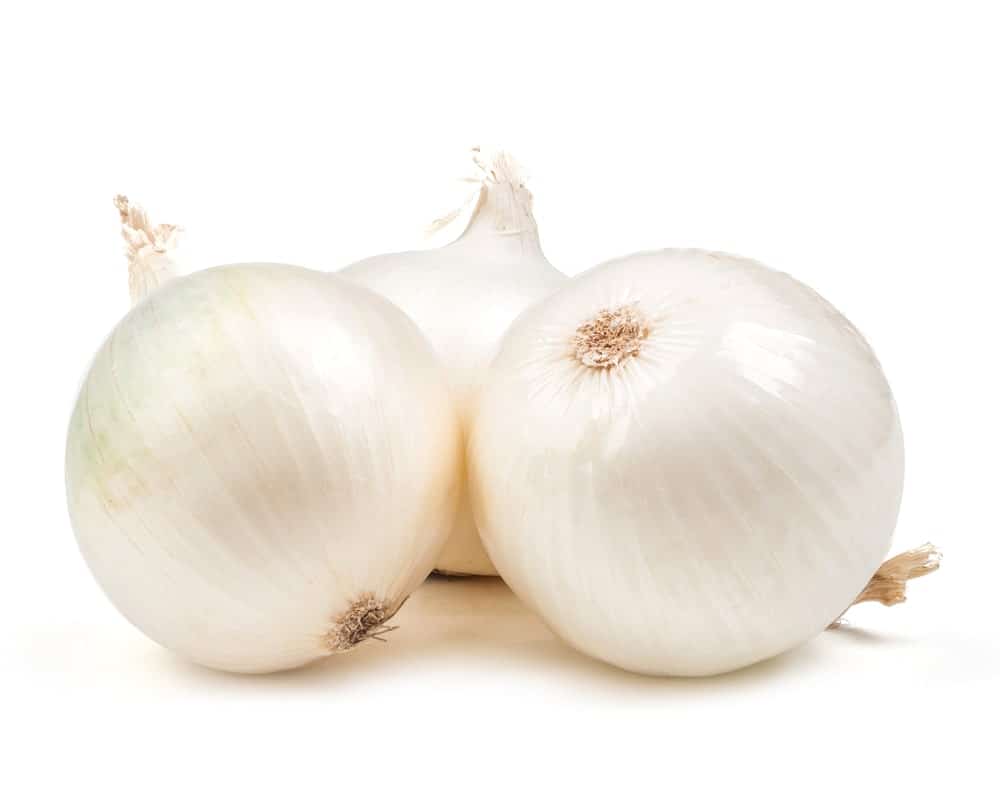
White onions are often referred to as a paler version of yellow onions due to their mild white flesh and pure white, papery skin. They have a strong, pungent flavor that is slightly on the sweeter side.
These onions are a staple in Mexican Cuisine because their flavor strongly complements the flavor of the other Mexican ingredients. They have a slightly sweet aftertaste that makes them perfect for tacos, salsa, guacamole, and ceviche. Oftentimes, white onions are also used as a sideline in meat dishes in the form of pickles.
Some common white onion varieties include Vidalia, Walla Walla, and Mauri.
4. Red Onions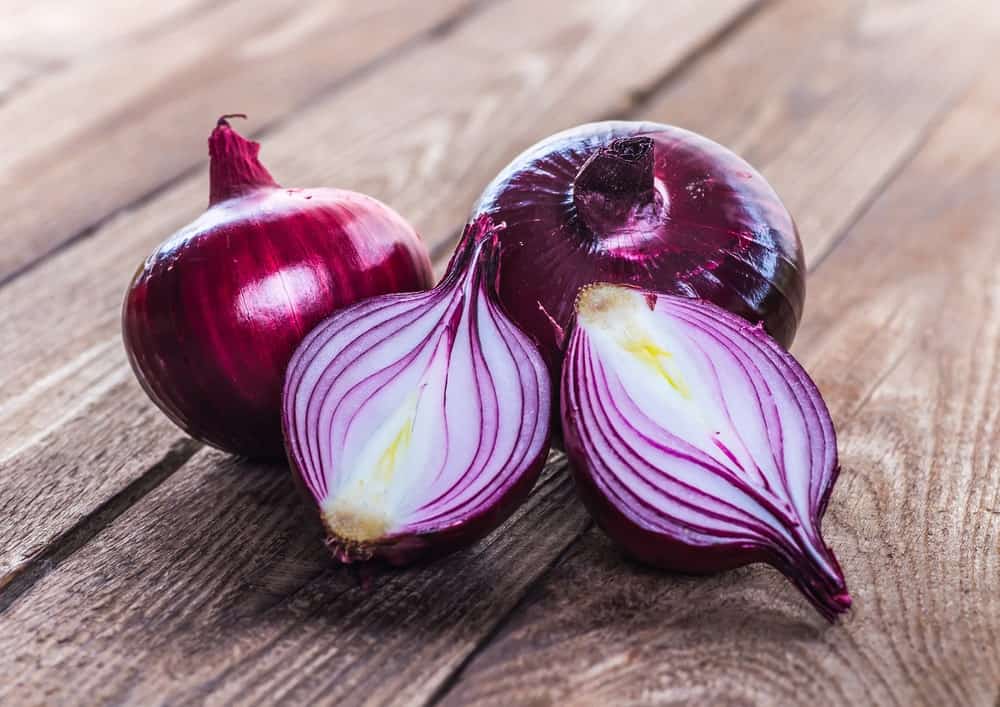
These are characterized by their deep, magenta color and are super crunchy with a strong, complex flavor. Interestingly, the variety of red onions grown from March to September is the sweetest; otherwise, they tend to have a very spicy and peppery flavor.
One of the most prominent suppliers of red onion is in the United States, particularly grown in Wethersfield, Connecticut. It was also New England’s primary source of red onions until the 1800s.
The best way to include red onions in your food is to have them raw, perhaps when added to salads or when used as garnishee for a burger.
5. Shallots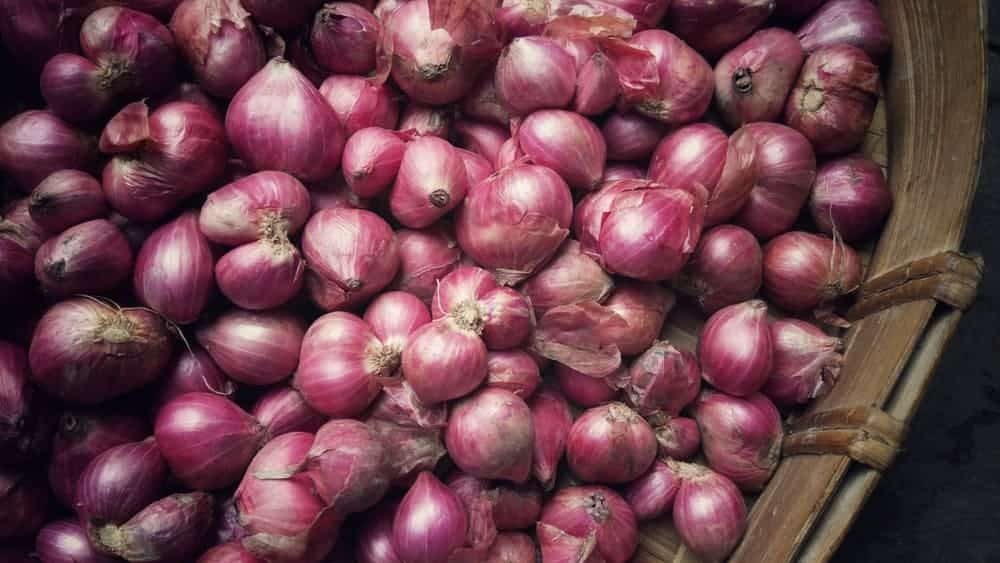
Shallots are a type of onion that is similar to green onions and leeks in terms of their looks. They are from the allium family and are believed to be a member of the onion family than a true onion.
They originated from Southwest and Central Asia, where they traveled to India and moved to the Eastern Mediterranean. Shallots are bulb-shaped alliums with a mild onion flavor but often taste like a mixture of onions and garlic. They are small and have a pale-purplish color with brown skin and purple flesh.
When used in food, shallots leave a very rich, intense flavor, making them perfect for salads, sauces, salad dressings, and curries.
6. Bermuda Onions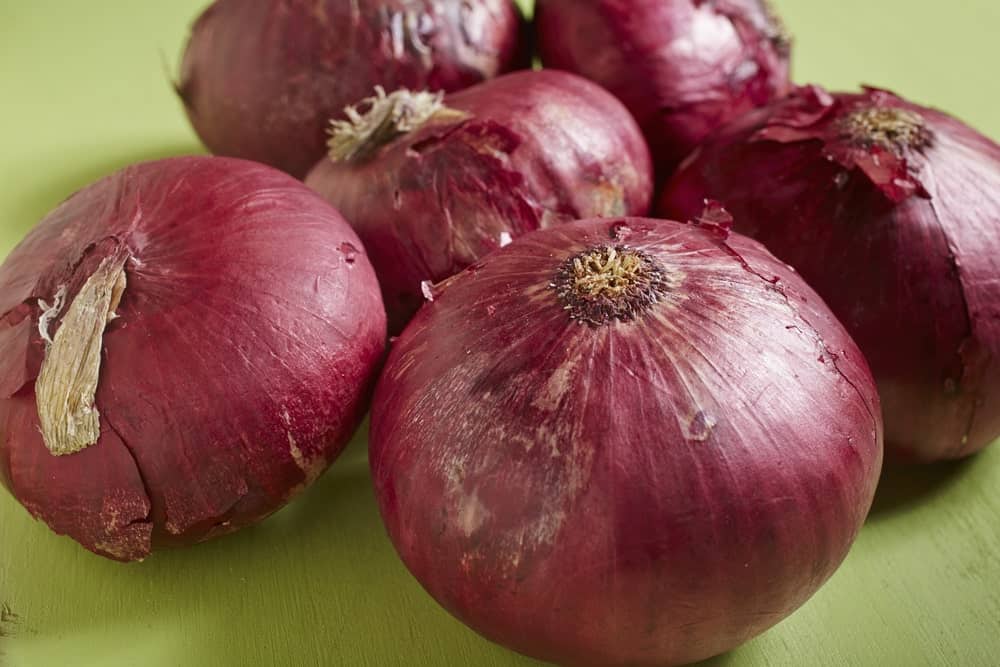
Bermuda onions were first brought to Bermuda in 1616 and later went on to become a staple crop there, which is how they acquired this unique name. Back in those days, these onions were bulb-shaped and had a very sweet and mild taste to them. They also came in various different colors like yellow, white, red, and purple.
Bermuda onions are often used as a substitute for shallots and Spanish onions due to their taste and flavor similarity. It is featured in a number of local dishes like the Bermuda onion soup and Bermuda Fish chowder, to name a few. These onions are also great for baking and stuffing due to their large size.
7. Leeks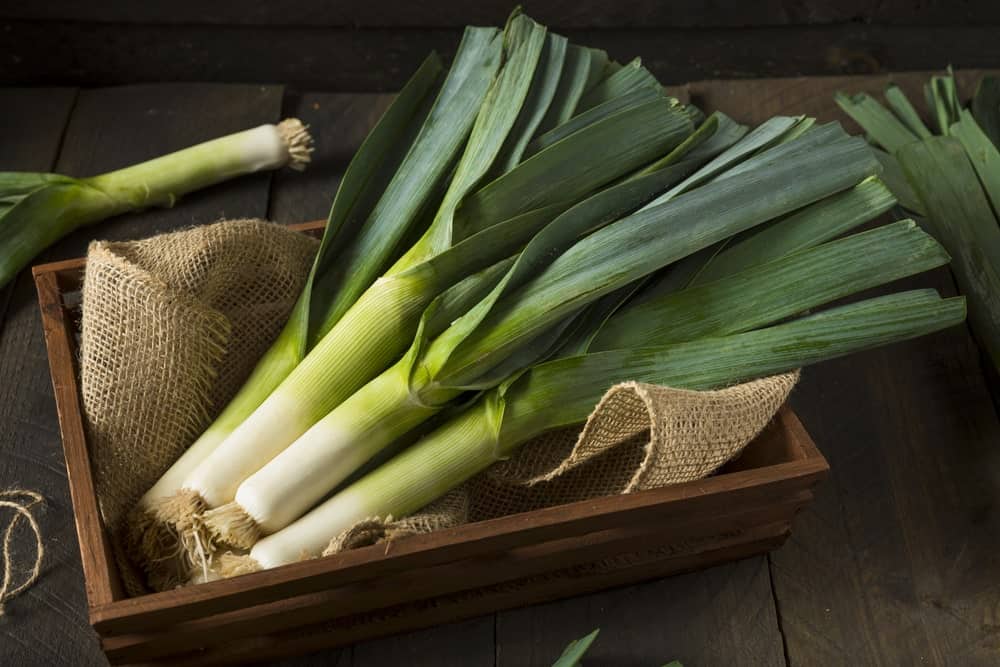
Leeks look like overgrown scallions and are truly marvelous vegetables. Compared to an onion, leeks don’t have the typical bulb shape but are shaped like long cylinders put together in a bundle.
Leeks are abundant in Egypt, and specimens from several archaeological sites in ancient Egypt have revealed that leeks were a significant part of the Egyptian diet. Interestingly, the leek was Emperor Nero’s favorite vegetable, which was the vegetable used in oils and soups.
Leeks are excellent to use in stews, stir-fry, and soups.
8. Welsh Onions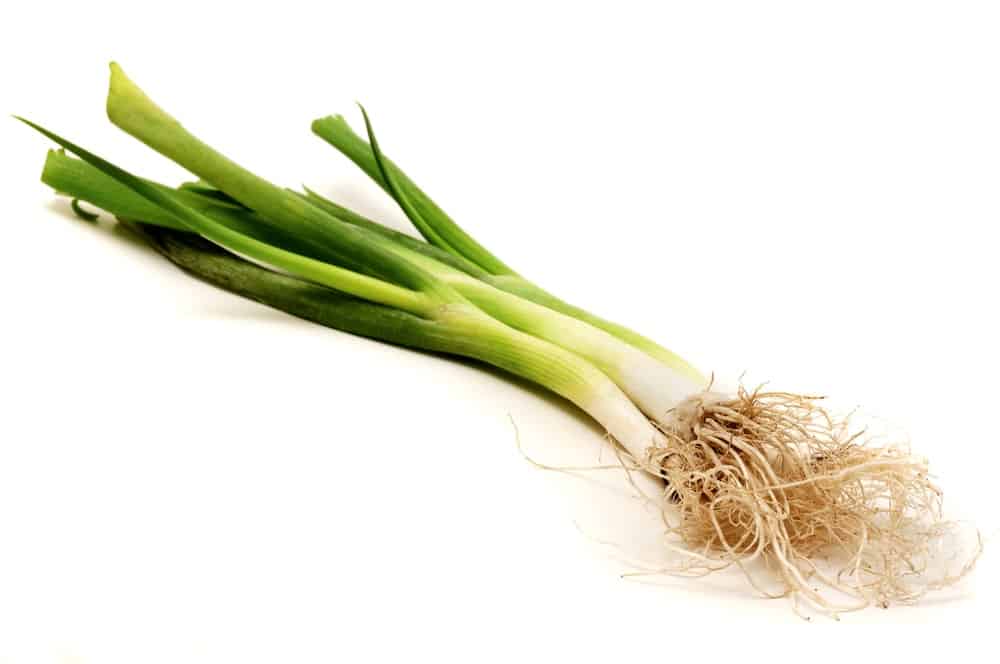
With similar looks to green onions, Welsh onions are native to China but have also been found growing in scattered locations across North America and Eurasia. They are slightly bigger than green onions and are popular in various Asian dishes.
The term “Welsh” is often believed to refer to ‘Wales’ however, it actually means foreign or non-native, which makes sense given its origin and heritage.
Welsh onions are excellent for various stir-fry dishes but can also be used in salads and soups.
9. Green Onions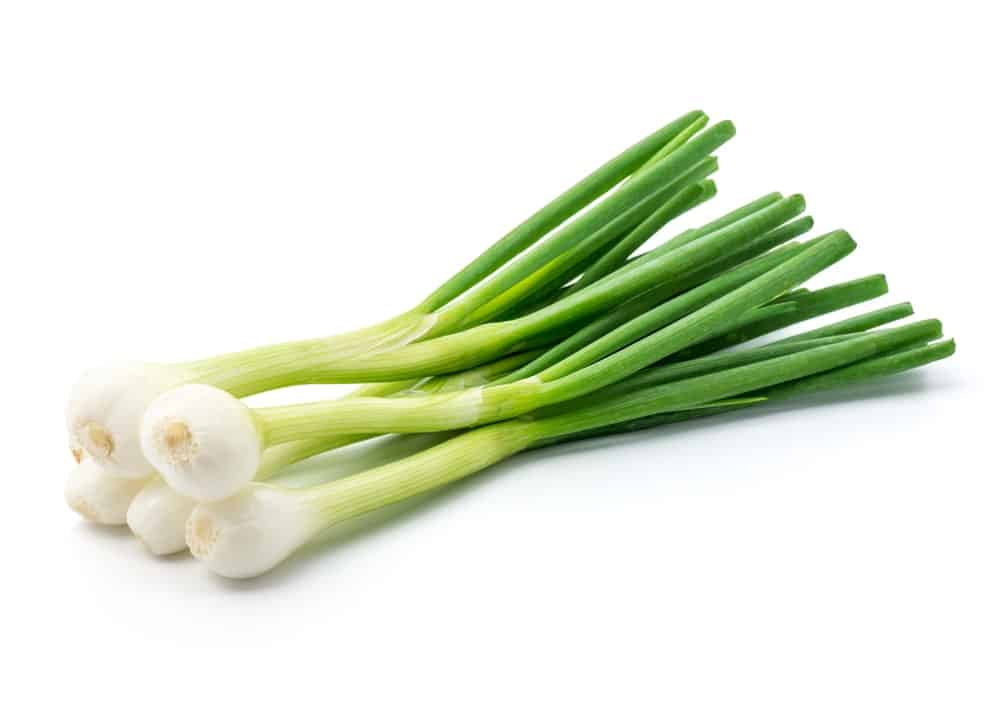
Also known as spring onions or scallions, green onions are super thin and long in shape and are always sold in big bunches. They belong to the same family as chives, leeks, garlic, and shallots and contain a milder taste than other onions.
Green onions are popularly used in various Asian dishes like teriyaki meats, stir-fries, sandwiches, and dips. They are also often used as garnishes because of their bright green color.
In the United Kingdom, for instance, green onions are usually chopped and added to mashed potatoes, whereas, in Mexico, they are whole grilled, sprinkled with salt, and eaten together with a combination of rice and cheese.
10. Pearl Onions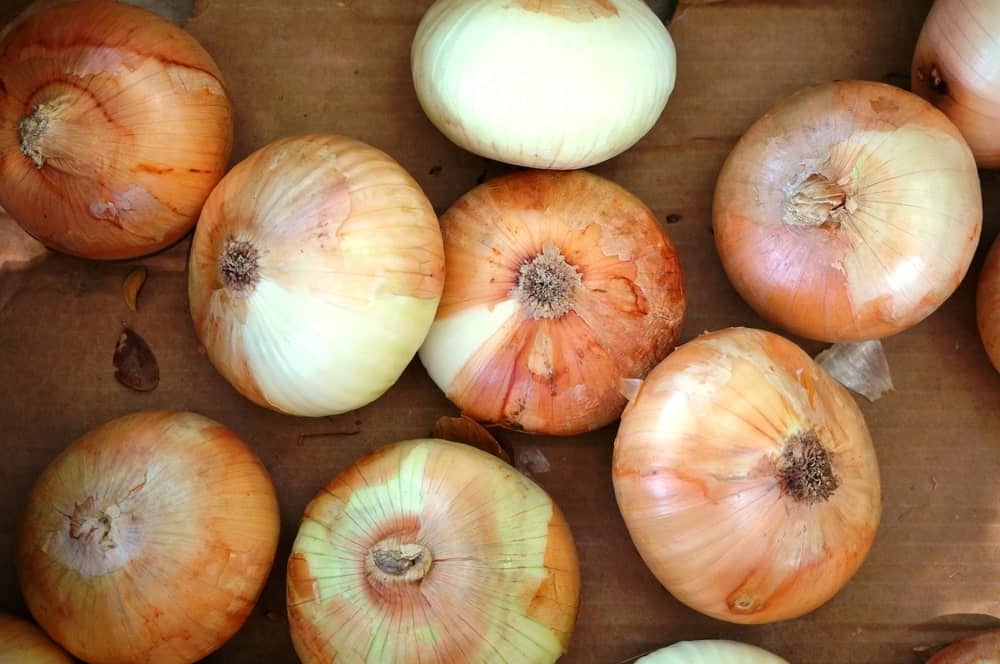
These are also called Button Onions or Baby Onions and actually look like tiny, glistening pearls, as the name suggests. They are so small that they are often used whole in salads and other food dishes.
Pearl onions have a sweet, mild taste and are great for pickling. They are most commonly cultivated in Germany, Italy, and the Netherlands.
Since they sport an ideal combination of being small in size and having a sweet taste, pearl onions have been used in many American casserole dishes, including succotash, and in various onion relishes in Indian cuisine.
A fascinating thing about pearl onions is that they are used as a cut flower in Israel and as a beautiful flowering plant in modern Europe due to their pearl-like appearance.
11. Maui Onions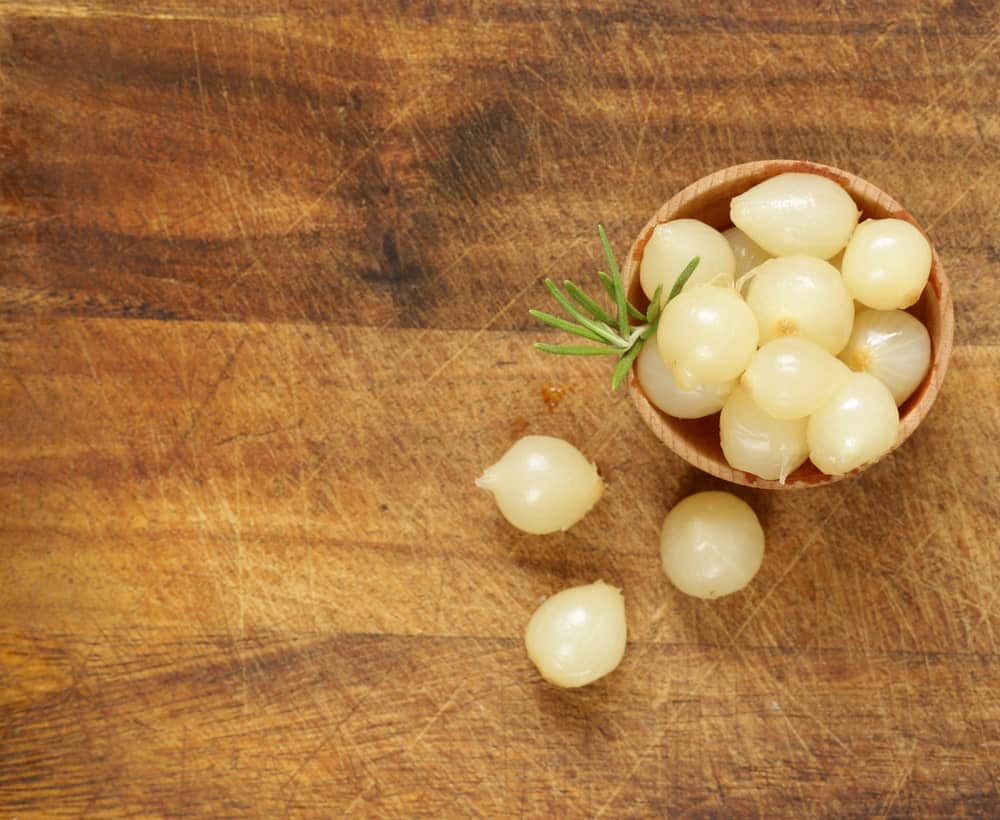
These come from the Hawaiian island of Maui, as the name suggests. Maui onions are super juicy and full of rich taste, which they seem to have acquired from Maui’s red volcanic soil.
They are extremely sweet in flavor, owing to their juiciness, and are excellent for marinating and caramelizing. They have a thin, papery, flaky skin that gives them a crispy texture, making them the perfect choice for delicious onion rings.
12. Spanish Onions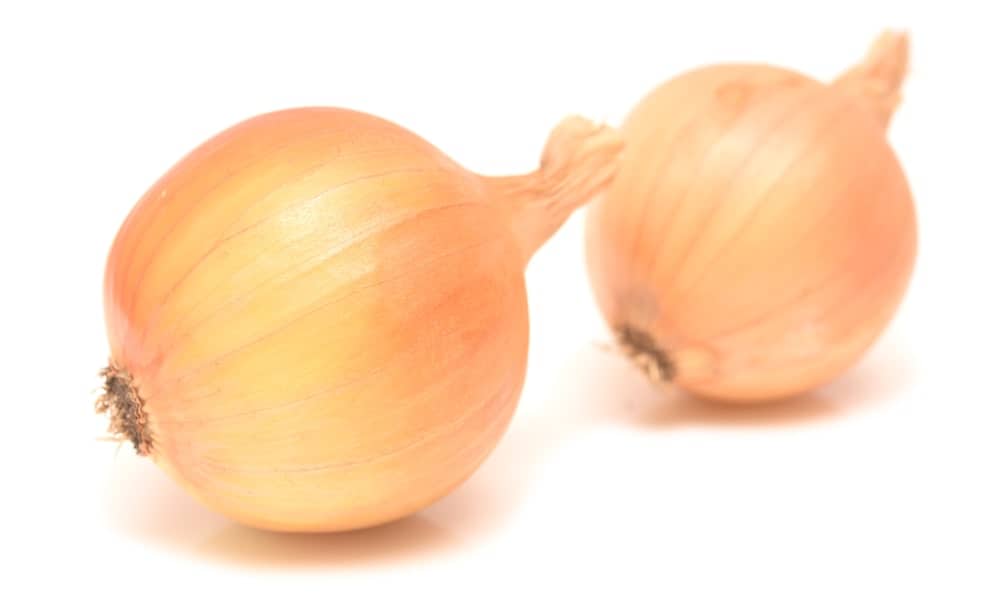
This is a type of yellow onion with a mild, sweet taste. They are slightly larger in size compared to other onions, which makes them ideal for hamburgers. Their size makes them great for large, stuffed onion rings and even salads and stews.
Spanish onions contain a high sulfur content, giving them a rich, pungent taste and aroma. Because of their mild and complex taste, they can even be eaten raw without the need for roasting, grilling, or cooking them.
13. Torpedo Onions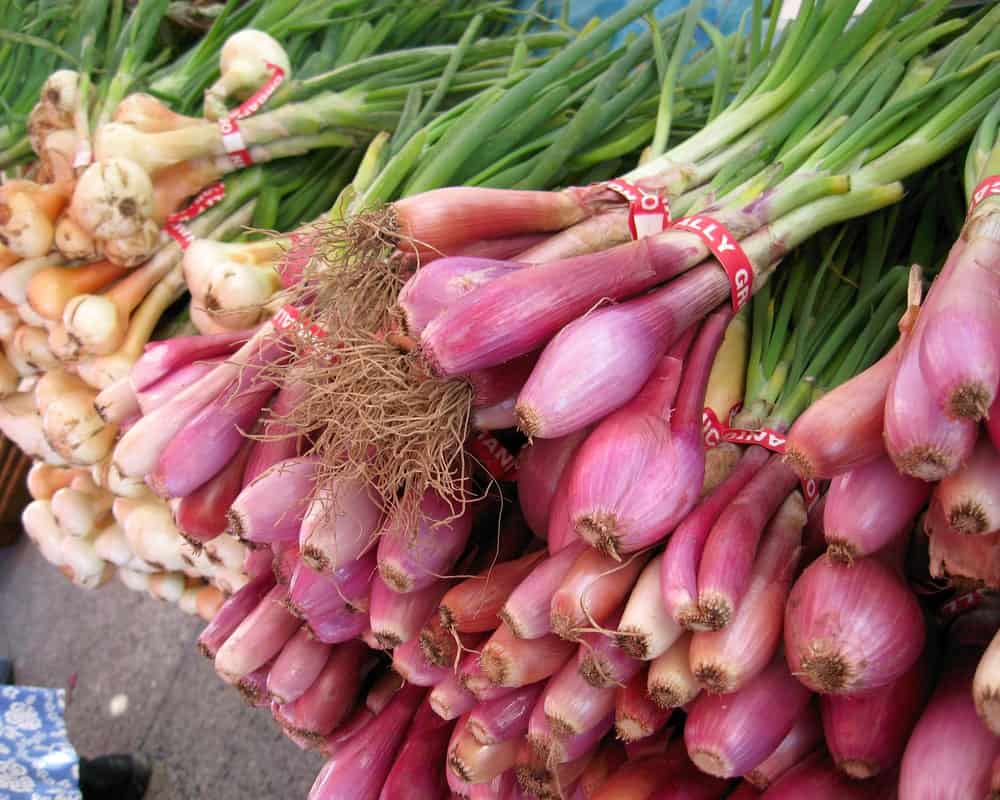
These onions come in small to medium sizes and contain elongated bulbs that are connected to straight and slender leaves. Torpedo onions are super crunchy with tender flesh, a mild aroma, and a sweet flavor.
They are native to Italy and are often featured in several Italian food varieties. These onions are believed to be best for grilling, roasting, braising, and sautéing. Their mild and sweet flavor also makes them ideal for salads, sandwiches, dips, and salad dressings.
Torpedo onions aren’t just popular for their unique shape, color, and size but also because of their high nutritional profile. They contain large amounts of vitamin C, potassium, calcium, magnesium, folate, and fiber, making them super healthy and beneficial.
14. Vidalia Onions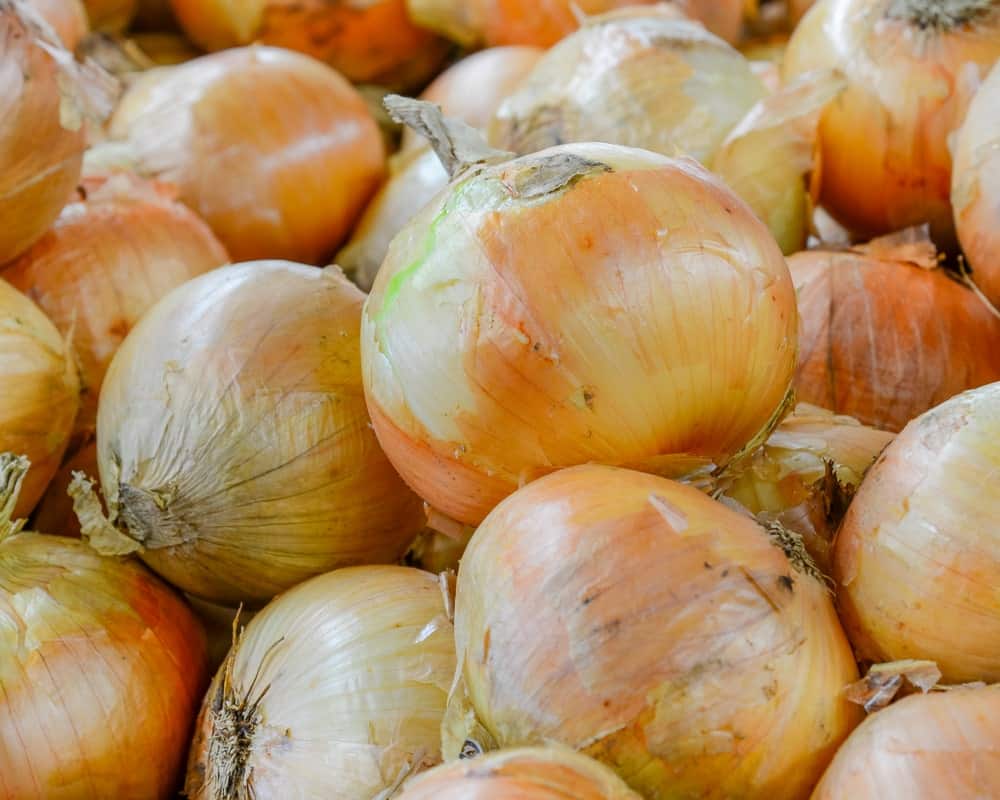
These onions are super popular in the South because of their extremely sweet flavor, which makes them ideal for raw consumption. Their origins can be traced back to the U.S. state of Georgia since the early 1900s and were named Georgia’s official state vegetable in the 1990s.
Vidalia onion is often described as a mild, succulent onion that is sweet enough to be eaten as a fruit. It is also very low in calorie content and is believed to be helpful for digestion.
These onions are best used raw in hamburgers, garden salads, and as a sideline to steaks.
15. Cipollini Onions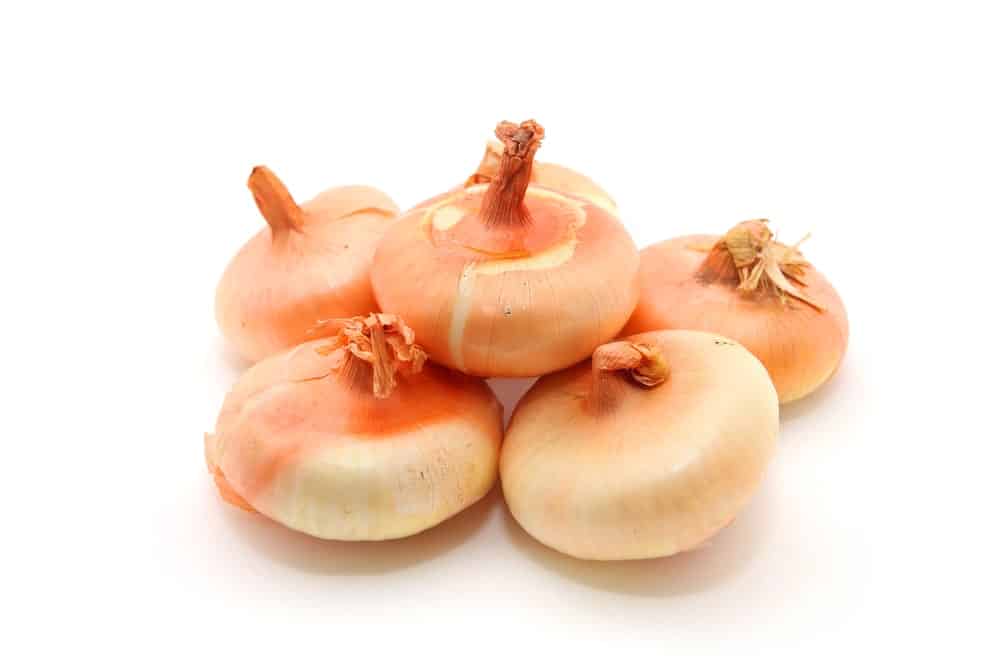
Cipollini literally translates to “little onion” in Italian, and that’s what cipollini onions actually are: little! These onions are almost similar to golf balls in terms of size and sport a much-flattened appearance. They have transparent white flesh that makes them thin-skinned.
Cipollini onions are brown or beige and contain a rich, sweet taste making them perfect for caramelized dishes.
When roasted in the oven with a bit of butter, these onions melt in your mouth and become super soft and tender. They are best used in various kinds of salads and provide a subtle sweet kick to your food.
16. Chives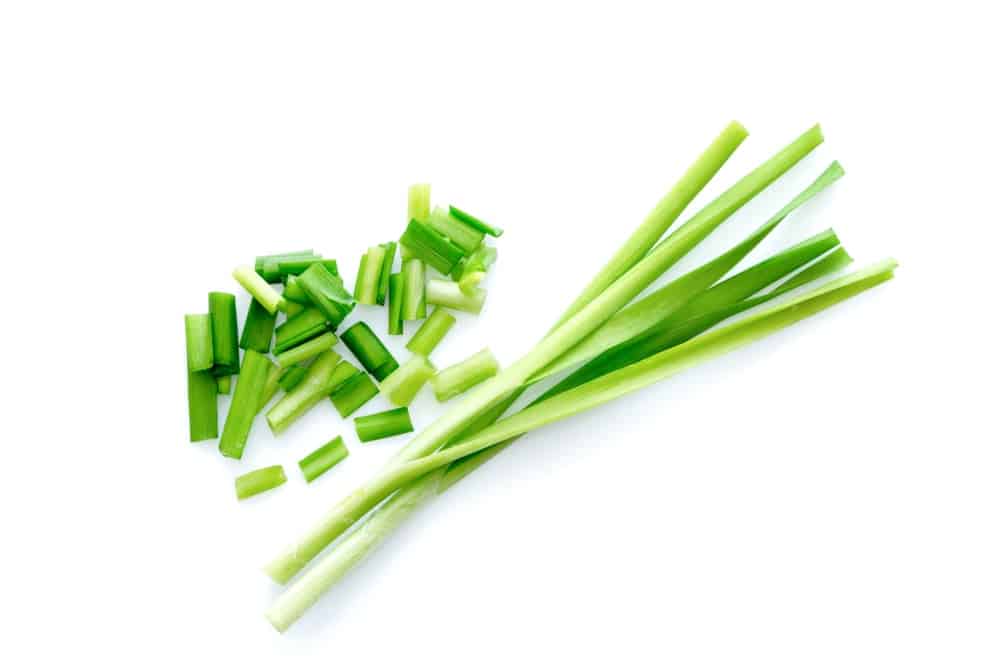
Chives are a type of onion that belong to the same family as garlic, leeks, and onion. They come in long, slender bulb shapes with a super soft texture to them. Chives are believed to be native to North America and have also been found in abundance in Northern Maine.
Chives are a very popular onion choice in soups, stews, salads, dips, and bottles of vinegar. They also have a very subtle yet unique flavor.
FAQ
What gives onions their distinctive smell?
Most onions contain a high amount of sulfur, giving them their distinctive smell and taste.
You Might Also Like:
- Substitute for Leeks: Easy and Tasty Alternatives
- What Goes Good with French Onion Soup?
- How to Make Store-Bought Potato Salad Better
